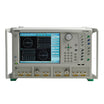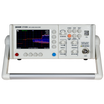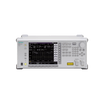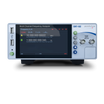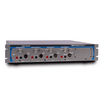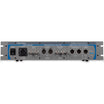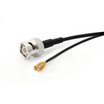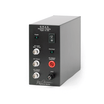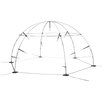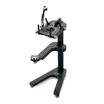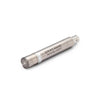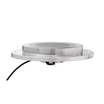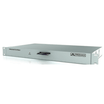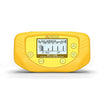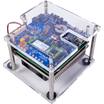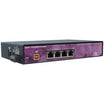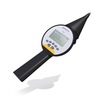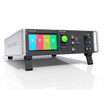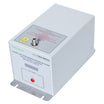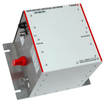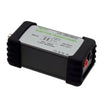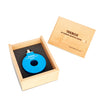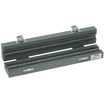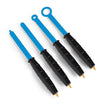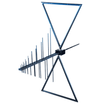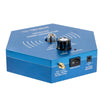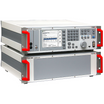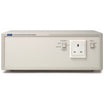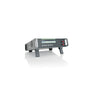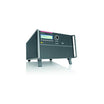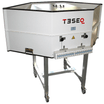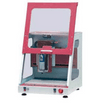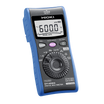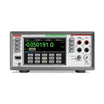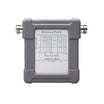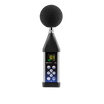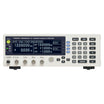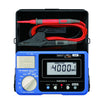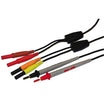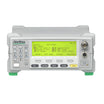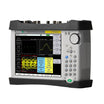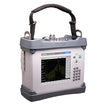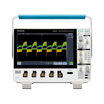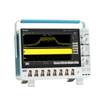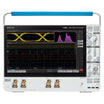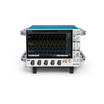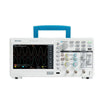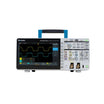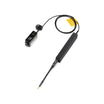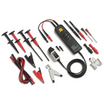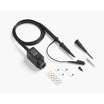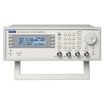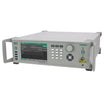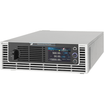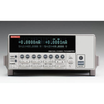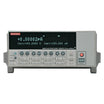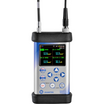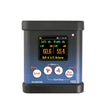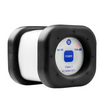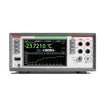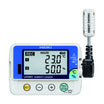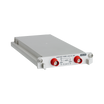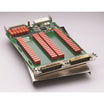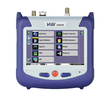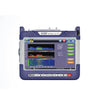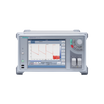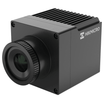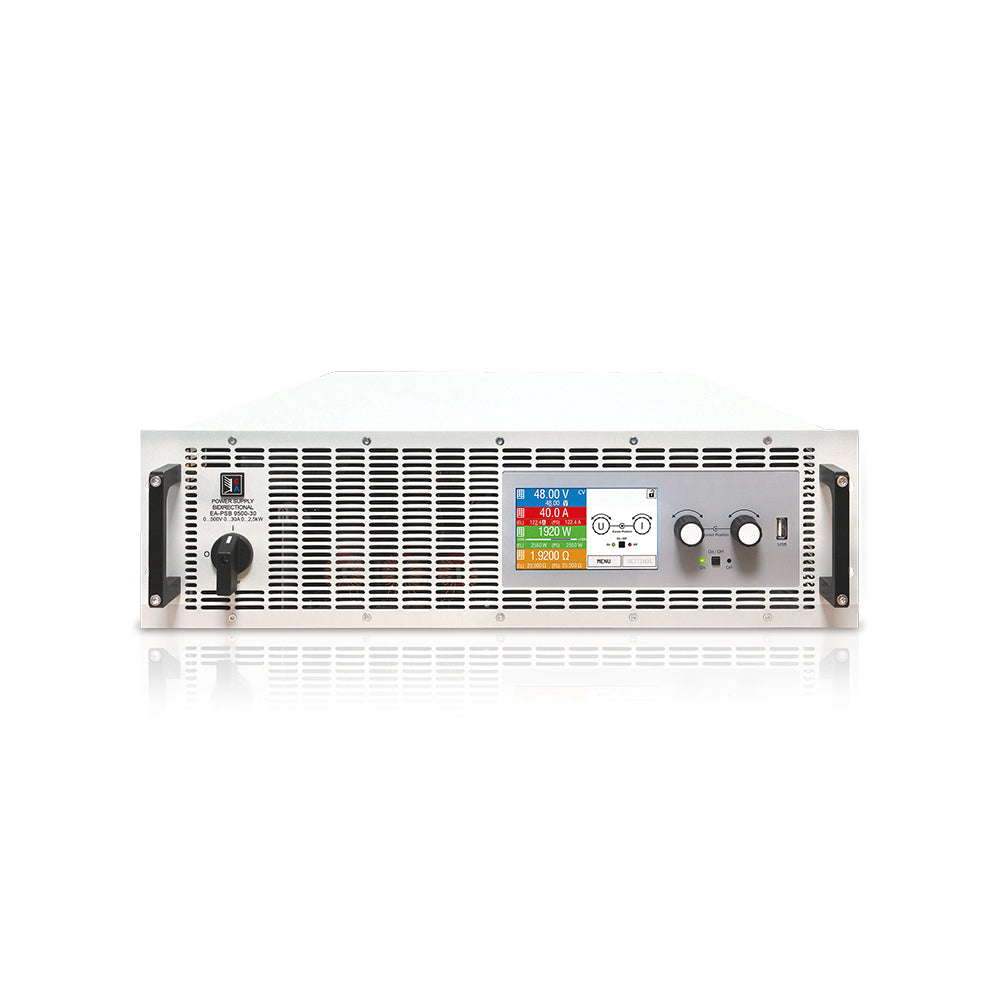
EA PSB 9500-30 3U US208V Bidirectional Power Unit
Use our chat for personal support or contact us via +45 31 33 18 19 or salg@GOmeasure.dk
- Housing: 19" rack
- Voltage (U): 500.00
- Current (I) Ampere: 30.00
- Power (P) Watt: 2500.00
Discover the possibilities
More information
Description
The microprocessor-controlled, bidirectional power supplies of series EA-PSB 9000 3U incorporate two de-vices in one: a power supply (source) and an electronic load (sink) with energy recovery. Based on these two features the devices offer the functionality of two-quadrants operation as standard. The internal electron-ic load achieves a high voltage dynamics by discharging the unavoidable capacitance on the DC terminal. For a connected source, the devices are full electronic loads with energy recovery feature, such as the devices from series EA-ELR 9000.
In source operation mode the device becomes a flexible, autoranging power supply like those of series EA-PSI 9000. It incorporates the advantages of both device types into one and at the same time it eliminates the disadvantages of separate units regarding weight, space requirement, costs and effort to implement them into custom test software.
Features:
- For 230 V
- Bidirectional device - power supply and electronic load in one
- Energy recovery with high efficiency
- Power rating: 2.5 kW
- Voltage ratings: 60 V up to 750 V
- Current ratings: 20 A up to 120 A
- Flexible, power regulated DC<->AC stage
- Various protection circuits (OVP, OCP, OPP, OTP)
- Intuitive TFT touch panel with display for values, status and notifications
- Remote sensing with automatic detection
- Galvanically isolated analog interface and USB port
- Integrated function generator
- Battery test, MPP tracking simulation
- Optional, digital interface modules
- SCPI and ModBus RTU/TCP command set
- LabView VIs and control software for Windows
AC supply
All models are provided with an active Power Factor Correction (PFC) circuit and are designed for operation on a single phase supply with 230 V (±15%). During load operation, the device regenerates the consumed DC energy and feeds it back into the local power network. This helps saving a lot of energy costs.
Autoranging power stage
All models are equipped with a flexible autoranging bi-directional power stage which provides a higher output voltage at lower output current or a higher output cur-rent at lower output voltage, always limited to the max. rated output power. The same applies for sink mode oper-ation. The power set value is adjustable with these mod-els. Therefore, a wide range of applications can already be covered by the use of just one unit.
DC output/input
DC voltages between 0...60 V and 0...750 V, current ratings between 0...20 A and 0...120 A and a power rat-ing of 0...2.5 kW are available. The DC terminal is located on the rear panel.
Source-sink operation
One salient feature of these devices is the coalescence of an electronic load, also called sink, and a pow-er supply, also called source, into one unit. It means, the device cannot only arbitrarily operate as sink or source, the switchover between these two operating modes occurs without interruption and time loss. This is also called two-quadrants operation.
Energy recovery
The most important feature of these devices is that the AC input while connected to the grid is also used as output for the recovery of the supplied DC energy during load operation, which is converted with an ef-ficiency of up to 95%. This way of energy recovery helps to lower costs and can avoid expensive cooling systems, such as they are required for conventional electronic loads which only convert energy into heat. Principle view.
Operation of these energy recovering devices, in terms of electricity generation, is not intended. Grid pro-tection devices which can supervise the feedback of energy into the public grid are available on the market for optional installation and are installed to achieve additional safety of persons and equipment, especially when running the so-called isolated operation.
Display and control panel
Set values and actual values of input & output voltage / current / power are clearly represented on the graphic display. The color TFT screen is touch sensitive and can be intuitively used to control all functions of the device with just a finger tip.
Set values of voltage, current, power or resistance can be adjusted using the rotary knobs or entered di-rectly via a numeric pad.
To prevent unintentional operations, all operation controls can be locked.
Function generator
All models of this series include a software based function generator which can generate typical functions, as displayed in the figure below, and apply them to either the voltage or the current. The generator can be completely configured and controlled by using the touch panel on the front of the device, or by remote con-trol via one of the digital interfaces.
The predefined functions offer all necessary parameters to the user, such as Y offset, time / frequency or amplitude, for full configuration ability.
Additionally to the standard functions, which are all based upon a so-called arbitrary generator, this gen-erator is accessible for the creation and execution of complex sets of function runs, separated into up to 99 sequence points. Those can be used for testing purposes in development and production. The sequence points can be loaded from and saved to a standard USB stick via the USB port on the front panel, making it easy to change between different test sequences.
There is furthermore an XY generator, which is used to generate functions such as IU, defined by the user in form of tables (CSV file) and then loaded from USB stick. For photovoltaics related tests, a standard PV curve can be generated and run from user-adjustable key parameters, including an extended version ac-cording to the european norm EN 50530.
Master-slave
All models feature a digital master-slave bus by default. It can be used to connect up to 32 units of identical models in parallel operation to a bigger system with totals formation of the actual value of voltage, current and power. The configuration of the master-slave system is either completely done on the control panels of the units or by remote control via any of digital communication interfaces. Handling of the master unit is possibly by manual or remote control (any interface).
Analog interface
There is a galvanically isolated analog interface terminal, located on the rear of the device. It offers analog inputs to set voltage, current, power and re-sistance from 0...100% through control voltages of 0 V...10 V or 0 V...5 V. To monitor the output voltage and current, there are analog outputs with 0 V...10 V or 0 V...5 V. Also, several inputs and outputs are available for con-trolling and monitoring the device status.
Control software
Included with the devices is a control software for Windows PCs, which al-lows for the remote control of multiple identical or even different types of devices. It has a clear interface for all set and actual values, a direct input mode for SCPI and ModBus RTU commands, a firmware update feature and the semi-automatic table control named “Sequencing”. Further features which can be unlocked by a purchasable license:
- Graphical visualization of the actual values
- Multi Control - an app to control up to 20 units at once, including Sequenc-ing and Function Generator
- Function generator control with simple PV, PV EN 50530, Sandia and SAS
Specifications
Documents
Options
Video
The microprocessor-controlled, bidirectional power supplies of series EA-PSB 9000 3U incorporate two de-vices in one: a power supply (source) and an electronic load (sink) with energy recovery. Based on these two features the devices offer the functionality of two-quadrants operation as standard. The internal electron-ic load achieves a high voltage dynamics by discharging the unavoidable capacitance on the DC terminal. For a connected source, the devices are full electronic loads with energy recovery feature, such as the devices from series EA-ELR 9000.
In source operation mode the device becomes a flexible, autoranging power supply like those of series EA-PSI 9000. It incorporates the advantages of both device types into one and at the same time it eliminates the disadvantages of separate units regarding weight, space requirement, costs and effort to implement them into custom test software.
Features:
- For 230 V
- Bidirectional device - power supply and electronic load in one
- Energy recovery with high efficiency
- Power rating: 2.5 kW
- Voltage ratings: 60 V up to 750 V
- Current ratings: 20 A up to 120 A
- Flexible, power regulated DC<->AC stage
- Various protection circuits (OVP, OCP, OPP, OTP)
- Intuitive TFT touch panel with display for values, status and notifications
- Remote sensing with automatic detection
- Galvanically isolated analog interface and USB port
- Integrated function generator
- Battery test, MPP tracking simulation
- Optional, digital interface modules
- SCPI and ModBus RTU/TCP command set
- LabView VIs and control software for Windows
AC supply
All models are provided with an active Power Factor Correction (PFC) circuit and are designed for operation on a single phase supply with 230 V (±15%). During load operation, the device regenerates the consumed DC energy and feeds it back into the local power network. This helps saving a lot of energy costs.
Autoranging power stage
All models are equipped with a flexible autoranging bi-directional power stage which provides a higher output voltage at lower output current or a higher output cur-rent at lower output voltage, always limited to the max. rated output power. The same applies for sink mode oper-ation. The power set value is adjustable with these mod-els. Therefore, a wide range of applications can already be covered by the use of just one unit.
DC output/input
DC voltages between 0...60 V and 0...750 V, current ratings between 0...20 A and 0...120 A and a power rat-ing of 0...2.5 kW are available. The DC terminal is located on the rear panel.
Source-sink operation
One salient feature of these devices is the coalescence of an electronic load, also called sink, and a pow-er supply, also called source, into one unit. It means, the device cannot only arbitrarily operate as sink or source, the switchover between these two operating modes occurs without interruption and time loss. This is also called two-quadrants operation.
Energy recovery
The most important feature of these devices is that the AC input while connected to the grid is also used as output for the recovery of the supplied DC energy during load operation, which is converted with an ef-ficiency of up to 95%. This way of energy recovery helps to lower costs and can avoid expensive cooling systems, such as they are required for conventional electronic loads which only convert energy into heat. Principle view.
Operation of these energy recovering devices, in terms of electricity generation, is not intended. Grid pro-tection devices which can supervise the feedback of energy into the public grid are available on the market for optional installation and are installed to achieve additional safety of persons and equipment, especially when running the so-called isolated operation.
Display and control panel
Set values and actual values of input & output voltage / current / power are clearly represented on the graphic display. The color TFT screen is touch sensitive and can be intuitively used to control all functions of the device with just a finger tip.
Set values of voltage, current, power or resistance can be adjusted using the rotary knobs or entered di-rectly via a numeric pad.
To prevent unintentional operations, all operation controls can be locked.
Function generator
All models of this series include a software based function generator which can generate typical functions, as displayed in the figure below, and apply them to either the voltage or the current. The generator can be completely configured and controlled by using the touch panel on the front of the device, or by remote con-trol via one of the digital interfaces.
The predefined functions offer all necessary parameters to the user, such as Y offset, time / frequency or amplitude, for full configuration ability.
Additionally to the standard functions, which are all based upon a so-called arbitrary generator, this gen-erator is accessible for the creation and execution of complex sets of function runs, separated into up to 99 sequence points. Those can be used for testing purposes in development and production. The sequence points can be loaded from and saved to a standard USB stick via the USB port on the front panel, making it easy to change between different test sequences.
There is furthermore an XY generator, which is used to generate functions such as IU, defined by the user in form of tables (CSV file) and then loaded from USB stick. For photovoltaics related tests, a standard PV curve can be generated and run from user-adjustable key parameters, including an extended version ac-cording to the european norm EN 50530.
Master-slave
All models feature a digital master-slave bus by default. It can be used to connect up to 32 units of identical models in parallel operation to a bigger system with totals formation of the actual value of voltage, current and power. The configuration of the master-slave system is either completely done on the control panels of the units or by remote control via any of digital communication interfaces. Handling of the master unit is possibly by manual or remote control (any interface).
Analog interface
There is a galvanically isolated analog interface terminal, located on the rear of the device. It offers analog inputs to set voltage, current, power and re-sistance from 0...100% through control voltages of 0 V...10 V or 0 V...5 V. To monitor the output voltage and current, there are analog outputs with 0 V...10 V or 0 V...5 V. Also, several inputs and outputs are available for con-trolling and monitoring the device status.
Control software
Included with the devices is a control software for Windows PCs, which al-lows for the remote control of multiple identical or even different types of devices. It has a clear interface for all set and actual values, a direct input mode for SCPI and ModBus RTU commands, a firmware update feature and the semi-automatic table control named “Sequencing”. Further features which can be unlocked by a purchasable license:
- Graphical visualization of the actual values
- Multi Control - an app to control up to 20 units at once, including Sequenc-ing and Function Generator
- Function generator control with simple PV, PV EN 50530, Sandia and SAS



